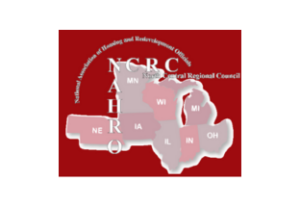How to overcome challenges of real estate fixed asset management
Fixed asset management is a tedious and sometimes overly complicated process. Think about some of the tedious tasks in your daily life. Have you ever had moments where you stop and think, “is this really the best way I can be doing this?” When we ask this, we often discover problems so debilitating yet so ingrained in us that we didn’t even know they were problems.
When we’re communicating with our clients, we frequently find fixed asset management being discussed in this very way.
Maintaining the accounting of your real estate fixed assets, whether across a single property or across an entire portfolio is usually a manual, spreadsheet-based task. Data needs to be entered, property depreciation values need to be calculated, and property information is in constant need of updating.
Take a moment to think about the way you manage the accounting of your fixed assets. Now take a step back and ask yourself: Is this really the best way to manage real estate fixed assets?
The biggest challenges in fixed asset management
Spreadsheets have been the go-to accounting tool for real estate fixed assets for a long time, serving as a good way to set up a master list of all of your properties and company assets with calculations and formulas that you could build in to manage those lists. However, spreadsheets are almost never the final dwelling places for fixed asset data, and when you begin to move things from one place to the next, inconsistencies pop up and the margin for error widens.
In the world of today, spreadsheets are unreliable, time consuming and they leave far too much room for user error. In addition, spreadsheets have limited security and cannot leave an audit trail. You need a platform that learns to adapt to the way you do business – not the other way around.
This is especially true for the real estate industry, where an error in depreciating an asset or misinterpreting a lease can leave you in serious financial or legal trouble. Let’s take a look at several of the problems that a reliance on spreadsheets exacerbate and what your organization can do to counter them.
Physical Audit Trails
“On average, 65% of fixed asset data is incomplete, inaccurate or altogether missing, a potential disclosure risk for executives now responsible for certifying the accuracy of financial data as a result of Sarbanes-Oxley compliance.” -Asset Management Resource (AMR)
That’s a troubling statistic to say the least. When your organization prepares for an audit, you need to know you have control over your various assets domestically and internationally. It goes without saying that missing or inaccurate data poses a significant risk to your organization.
The Solution:
You need audit trails and visibility in your fixed asset information, otherwise your confidence can be destabilized when going into an audit.
Depreciating Calculations
The problem with depreciating calculations is that depending on what tax codes, lease standards, and other financial regulations you’re guided by, different assets may need different calculations. Spreadsheets may allow you to input multiple formulas per sheet, but as more information is added, these documents get unwieldy and, in most cases, error-filled. When you’re trying to keep up with depreciating calculations, you have to continually ask questions.
The Solution:
The obvious solution to this issue is to get a tool that can adapt to calculations – one that can actively keep formulas up to date and project future depreciation.
Decentralized Systems
When you keep all of your real estate organization’s fixed asset data on spreadsheets, it becomes too easy for updated information to get lost in the fold. Before you know it, “Department A” has one copy of the property information you seek and “Department B” has another. The data doesn’t match, and neither department knows which copy is the most up to date. Some organizations may remedy this problem by outsourcing information to a third party, but chances are, that third party is using spreadsheets too, which brings us back to the start of the problems.
The Solution:
The only substantial way to tackle this issue is to implement a system that can be accessed by several different people at once. You need a platform that will serve as a centralized system to maintain data integrity and support your business processes without compromise.
So is there any easier way to manage fixed assets?
Yes! MRI Software has developed a set of fixed asset management tools that can help you overcome the challenges listed above in ways that work with your business. With MRI Fixed Asset software, you can manage your assets by any field in a system made for the addition and update of assets. If you’re looking at your current fixed asset management process and seeing inefficiencies and margin for error, learn more about MRI Fixed Assets as a solution to your organization’s issues.
Spend less time collecting information and more time growing the businessReal Estate Accounting Software

GASB Compliant Fixed Asset & Lease Accounting Software
If you struggle with spreadsheets or an outdated legacy system to close your year-end accounts or cannot effectively manage current and historic cost accounting and provide the level of reporting required under GASB, request MRI Software’s free eBook…

